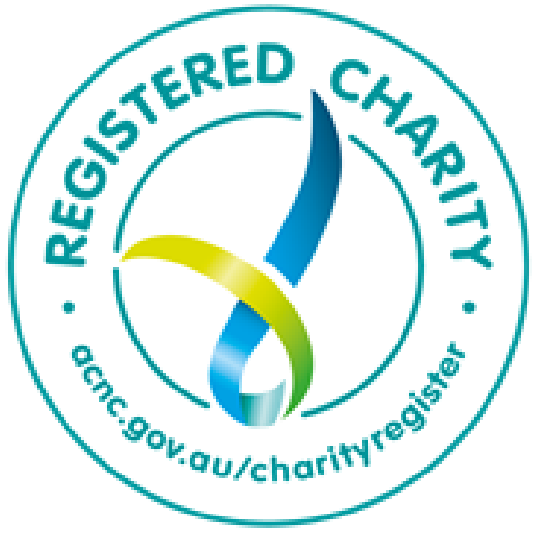Creating a positive body image environment for males
In lights of Men’s Health Week (13th-19th June), we’re unpacking how to build healthy environments for men and boys, specifically, creating a positive body image environment.
Body image – the thoughts, feelings, attitudes and beliefs we have about our bodies and how we look– is one of the most complex and long-lasting relationships one will ever have. How we feel about our bodies will evolve over the course of our lifetime, and body image can greatly influence the way we move throughout the world.
We’ve come a long way from the damaging misconception that body image is only a female issue, but research demonstrates that men tend to be quieter about their body negativity, seeking treatment less frequently or holding off accessing support due to shame.
Do males experience body dissatisfaction?
Males experience body dissatisfaction just like females and non-binary people do.
A 2017 Butterfly Foundation survey found that 40 per cent of respondents identifying as male were dissatisfied or very dissatisfied with their appearance (compared with 46 per cent of respondents identifying as female). [i]
Another study found 55 per cent of boys aged 12 to 18 expressed a desire to alter their body in some way.[ii]
Body dissatisfaction is also a leading risk factor in the development of eating disorders. In Australia, more than 37% of people experiencing an eating disorder are male, but experts believe this number may be higher, due to shame and stigma preventing many from seeking support.
Clinicians or health professionals may also overlook or misdiagnose eating disorders in male patients, particularly as the current diagnostic criteria is orientated towards thinness and not muscularity, with muscularity-focused eating disorders and body image concerns are not as well understood[iii].
In saying that, male body image is complex, and not every male will subscribe to the muscular ideal. Between 15-20 per cent of people experiencing Anorexia Nervosa or Bulimia Nervosa will identify as male [iv], indicting male body image needs to be considered beyond a masculinity lens.
The pressures males face
Just as today’s society expects women to be thinner with statuesque features, men, particularly in Western cultures, may feel pressure to ‘pump up’ their bodies and slim down, creating a combination of lean, bulky muscle.
These cultural expectations – that men need to have a lean and muscular body in order to be accepted or successful, have been named as likely contributors to the growing prevalence of muscularity-focused body image disturbance in young men.[v]
This is not helped by disordered eating and exercise behaviours that are celebrated and praised in society. Recent studies demonstrate that over-exercising and an extreme pursuit of muscle growth are perceived as healthy behaviours for males (Mitchison & Mond, 2015), with the use muscle-building supplements becoming common – one study of secondary school students found half of boys aged 14-16 were using protein supplements. [vi].
Advertising and social and traditional media only compound these pressures. One study of 2000+ UK men aged between 16-24 found that only 54% of cis and trans males feel seen in advertising [vii], and that current practices have not evolved to be inclusive of all body shapes and sizes. And while the female fashion industry has begun to realise the importance of size diversity and inclusivity, the same can’t be said for the male fashion industry.
“So much of what’s advertised is just shiny, strong men in big, oiled bodies with big beards. The reality is that men come across in all different sorts of shapes and sizes and identities.” – Louis, 24
Body shaming and the pressures to look a certain way remain a widespread issue amongst young men, impacting 86% of cis men and 95% of trans males surveyed.
It’s imperative we help boys realise that they don’t have to sign-up to society’s ‘rules’ about male bodies and masculinity. Reinforcing that all bodies are good bodies, and that they should be valued for what they can do, not what they look like, is one keyway to foster a positive body image.
How to create a positive body image environment for young males
Be a positive role model
Parents and carers can make a real difference, and you can showcase what a positive body image looks like by role-modelling certain behaviours and attitudes yourself:
- Being watchful of language around bodies and appearance – use positive, neutral words and dialogue that is balanced, non-shaming and non-judgmental.
- Not assigning moral values to foods or body shape – food is not good or bad, and the idea that there is a superior body shape is a socially constructed phenomenon designed to profit off our insecurities.
- Reflecting on your own values around weight and appearance – be aware of weight and appearance biases and actively challenge these. Not sure how to unpack these thoughts? Read our guide to reducing weight stigma here.
- Moving your own body for health and wellbeing, rather than aesthetic changes such as muscle size.
- Taking the focus away from appearance and instead celebrate and express gratitude for what the body can do and achieve.
Communicate openly
Let the boys and males in your life know it’s ok to speak up about their feelings and it’s not less ‘manly’ or ‘weak to speak’. Ask questions and listen- it is important not to make assumptions as you want them to feel heard. Particularly around puberty, have open conversations about some of the changes that might be occurring in their bodies and reassure them that everyone develops and grows at different rates.
Know who is at higher risk
Those engaged in competitive, high-level sports, gay and transgender young people, boys of higher weight, those who have been teased or bullied, experienced trauma or are neurodiverse are all at higher risk of muscle dysmorphia, body dissatisfaction and eating disorders.
Male athletes also have an increased vulnerability to eating disorders, particularly those involved in sports with a greater emphasis on weight classes and aesthetic ideals (e.g. weight lifting, diving, gymnasts, etc.). It is estimated that 19% of male athletes experience disordered eating and/or an eating disorder.[viii]
Listen to former AFL player Brock McLean discuss his eating disorder and how it impacted his football career.
Know the warning signs
Be watchful of behaviours that may look “healthy” or be seen as disciplined, such as over-training or restrictive high-protein diets as these may be masking something more serious.
Trust your instincts – it’s never advised to ‘watch and wait’ if you think something is wrong. Early intervention can have a marked difference on an eating disorders severity and duration.
To learn about the physical, behavioural and psychological eating disorder warning signs males may exhibit, read NEDC’s factsheet here. If you’re unsure, need advice or need someone to talk to who ‘gets’ these issues, connect with our Helpline counsellors at 1800 ED HOPE (1800 33 4673).
Reflect on the strength/weight/gym/sports programs boys are participating in
Ensure programs are guided and boys are realistic about what can be achieved through strength training. Praise gains in performance rather than muscle size/physique. Make it fun and help boys to tune into their bodies. Encouraging non-competitive physical activity, without a focus on changing the body, can also be beneficial.
Join Butterfly’s evidence-informed programs
It can be tricky to know how best to respond to body image concerns, particularly among young males. Butterfly can help make it easier.
For families and carers
Join Body Kind Families, Butterfly’s FREE initiative designed to boost parents’/carers’ confidence in promoting positive body image and responding to body image concerns in their teenage children. It supports families to be kind to their own body and to others, with practical advice, tips, resources and videos, as well as Body Kind activities you can do with the whole family.
For teachers and professionals working with young people
Butterfly’s programs are evidence based and are designed to provide practical strategies, skills and resources to support positive body image and healthy behaviours in young Australians.
- RESET – RESET is Australia’s first digital education body image program tailored exclusively to starting a deeper conversation with boys about negative body image and eating disorders. RESET is for Male or co-educational groups aged 13 – 18 years, facilited by any professional working with young males in schools, youth, sporting or other activity groups.
- Body Kind Schools – Body Kind Schools is Australia’s largest annual positive body image movement for young people providing free and engaging activities to help young Australians find ways to be kind to their own body and to others.
- Professional development workshops and training – Butterfly runs a number of workshops designed to boost professional’s confidence in identifying and responding to eating disorders and body image concerns. Examples of these sessions include Understanding Eating Disorders in Young People and Body Esteem Educator Training.
Further reading
Fact sheet – eating disorders in males
Alex’s story: My journey as a male with Anorexia – what helped me recover?
Podcast episode: In depth with male body image expert, Dr. Scott Griffiths
References
[i] https://butterfly.org.au/wp-content/uploads/2020/05/Insights-into-Body-Esteem-Report-PDF2.pdf
[ii] Lawler, M., Nixon, E. (2011). Body dissatisfaction among adolescent boys and girls: the effects of body mass, peer appearance culture and internalization of appearance ideals. 40(1), 59-71. Retrieved from: https://pubmed.ncbi.nlm.nih.gov/20058058/
[iii] https://www.sciencedirect.com/science/article/abs/pii/S1054139X17304925
[iv] https://journals.plos.org/plosone/article?id=10.1371/journal.pone.0001541
[v] https://jeatdisord.biomedcentral.com/articles/10.1186/2050-2974-1-S1-O50
[vi] https://bmcpediatr.biomedcentral.com/articles/10.1186/s12887-020-1993-6
[vii] https://www.weareamplify.com/young-blood/all/young-blood-the-research/
[viii] Reardon, C.L., Hainline, B., Aron, C.M. (2019). Mental health in elite athletes: International Olympic Committee consensus statement British Journal of Sports Medicine 53(11):667-99.






















